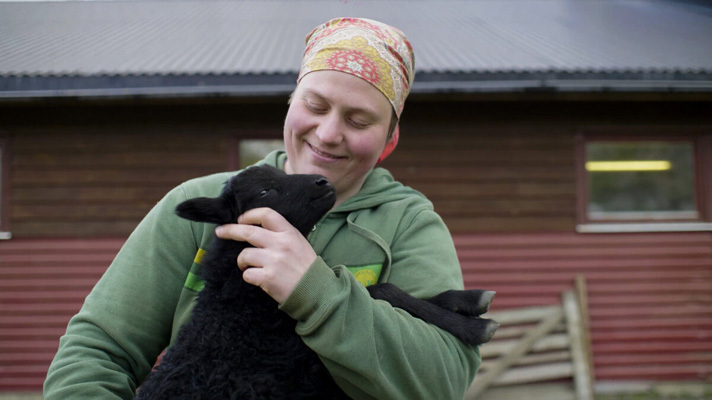Simon Popek wonders if this festival is the northernmost one of significance, but regardless is still certain that there is no disputing the program content. One film in particular was to resonate and pull the heart strings.
It is not so certain if the city of Tromsø hosts the northernmost film festival (or most northern and prestigious), but it is certainly one of the most prominent windows for contemporary cinema way up in the northern hemisphere. Other smaller towns in the north (Greenland? Alaska?) might offer some kind of cinema entertainment but Murmansk in Russia is the only other one that instantly comes to mind. Facts are facts though, Murmansk might be the colder place but Tromsø is approximately one hundred kilometers further north.
Most of all, it was a pleasure to be there for the FIPRESCI jury in January, for what is a great location with plenty of cinemas and one “venue” that would have saved the festival if Tromsø had none. The Winter Cinema offers outdoor screenings to all audiences at Vervet quartier, the “coolest” venue in town (as they market the place by the sea), where screenings take place both in the morning and afternoon for the whole festival week.
The jury were not obliged to see any films at the outdoor cinema but there was the greatest spectacle Tromsø has on offer – at the festival or otherwise -, the northern lights or aurora borealis, the outdoor cinema of choice. Those weirdly shaped green lights are of course pesky and capricious apparitions, they don’t announce themselves and they don’t exactly follow timetables that modern phone applications almost always get wrong. Which is fine as unannounced pleasures hit stronger than well planned ones; which is also in perfect tune with official festival expectations. One could go on rambling how many times they were disappointed with the most “talked about” and “most anticipated” films festivals have on offer. At the same time there’s always that small, off-radar movie that you somehow stumble upon (often on account of schedule conflicts), it creeps under your skin and wins you over with its sincerity and heart. It is never the movie of the year or chef-d’œuvre but still a good film, an unexpected wonder nonetheless.

Arriving to such an off-place (geographically) makes you want to see local or regional cinema. Sure, every non-A listed festival has plenty of festival favorites, “Masters” or “Best of Fests” sections, and Tromsø is no exception. One doesn’t normally come all this way and change three airplanes only to see Perfect Days, May December or The Zone of Interest (albeit, all fine films in themselves). The festival had lots of “snowy” films in its program (in the “Films from the North” section in particular), so the logical choice was a film called Woolly, a local film (Sau in Norwegian), directed by Rebekka Maria Nystabakk, and it was heart-warming. The official festival motto goes “Frozen Land, Moving Pictures”, and this cold, wintery documentary, set on a remote family sheep farm, was very moving. Being a bit of a sucker for sheep in movies (also donkeys), Woolly joined a long string of personally beloved films that include, most notably, Aardman Studio’s Shaun the Sheep series and Ilisa Barbash’s and Lucien Castaing-Taylor’s Sweetgrass (2009). Woolly is clearly different; if Shaun offers escapist animation and Sweetgrass a Red River-like sheepherding spectacle across the plains of Montana, then Woolly could be (almost) called sheep farming ‘kammerspiel’, it mostly revolves around a fourth generation family farm and its interiors. It also offers ‘drama’ as young Rakel (the director’s younger sister) is adamant to successfully inherit her father’s farm. Also, can such a family endeavor be sustainable in a corporatized world where – as the closing titles reveal – a small farm like this goes broke in Norway almost every day?
The situation is far from rosy, winters are long, springs are a subject of discussion, hayfields are steep and tractors are useless there. Harvests can be poor and, well, sheep get lost or stranded while they graze on the mountain. The Scripture tells us that none of His sheep will be lost but then this is reality. To be fair to the Holy Book, Rakel – with help from her wife and the father, who just can’t stay away from “the business” – manages to remain somehow Biblical, she gathers lambs in her arms and carries them close to her heart, and she gently leads those that have young. Woolly boasts of a communal sense and is, among other things, a paean to work ethic. We might get a Woolly: Part 2 in the coming years, informing us about the fate of the Nystabakk farm. One can only hope that they survive.
Simon Popek
Edited by Steven Yates
© FIPRESCI 2024
